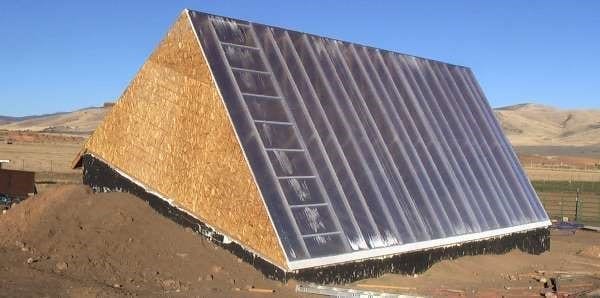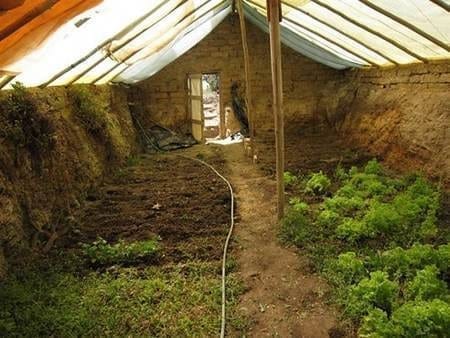Walipini
A walipini is an underground passive solar greenhouse used in cold climates to allow year-round growing with little or no active heating. It combines the advantages of an earth-sheltered building with passive solar heating and is inexpensive to construct.
Throughout most of the planet, soil temperature at 4 feet deep is 50 to 60°F, even if the surface temperature is below freezing. With walipini generally placed at 6 to 8 feet deep, a consistent temperature on the ground level of the walipini is assured. The geothermal heat of the surrounding soil keeps the structure from freezing at night, and correctly positioned glazing captures solar heat during the day.
The hardest part of construction is digging the hole, otherwise, labor is minimal, meaning costs are low. If building one yourself, you can dig by hand or use a machine. Walipinis have no structural supports in their walls, they rely on the packed earth of the hole to prevent collapse, meaning you should only build one where the soil is stable.
Water penetration is the biggest danger for walipinis, so make sure the water table is more than 5 feet below the bottom of the walipini. Berm (pack soil around) all above-ground walls. Seal the berm with a layer of impermeable clay or plastic sheeting, and direct the runoff away from the walipini. Dig a drainage channel around the perimeter of the walipini, ensuring the water is directed away from the grow house.
A thick wall of rammed earth or stone at the back of the north end of the structure captures solar heat during the day and releases it at night. A lower wall on the south end of the hole allows the correct angle for the plastic roof to collect maximum solar gain.
The plastic roof is double layered with at least 1 to 4 inches between the two translucent sheets of plastic for insulation. A simple strip of wood between the sheets of tightly stretched plastic should easily provide the correct spacing.
When constructed correctly, these insulated microclimates can allow for year-round growing of crops.
Even if your climate is so cold that some additional heating is necessary (a rocket mass heater, for example), the soil temperature of 50 to 60 degrees means the additional heat required is a small fraction of what it would take to heat a similar sized over-ground structure.
To allow for the most heat gain on the shortest day of the year, the roof will have to be perpendicular to the sun on that day. You can calculate this angle by finding your latitude on a map or globe (or online) and add 23 degrees to this figure. The total of the two figures is the angle your south-facing roof needs to be.


